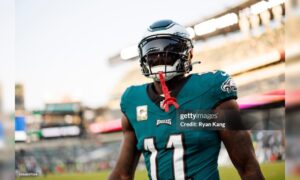While writing about new punter Brad Wing’s chances of becoming the regular punter for the Pittsburgh Steelers yesterday, and the comments regarding him made by team general manager Kevin Colbert at the NFL Combine, I also touched on the topic of underclassmen and maturity levels, and I think it’s worth further comment.
While addressing the media, Colbert was asked essentially if Wing had extra responsibility to prove that he was mature and responsible enough to be a professional athlete, after a college career tainted by physical and verbal altercations, poor displays of sportsmanship on the field, failed drug tests, and finally dismissal from the team.
Wing, an Australian, spent only two years in college, becoming a Ray Guy Award semi-finalist as a redshirt freshman in 2011. Following the 2012 season, which ended in a team suspension from participating in the team’s bowl game, Wing declared for the 2013 draft.
After going undrafted, he spent camp with the Philadelphia Eagles before being released prior to final cuts. He spent the rest of the 2013 season out of football before the Steelers signed him to a futures contract.
Colbert’s answer to that question was quite simply that the team would never have signed him if the organization believed he had questions of character detrimental to the team.
Furthermore, he described Wing as an underclassman that wasn’t ready mentally to become a professional, but after another year, a marriage, a child, and perhaps a dose of humility, it seems that Wing is ready to take off with his career. Whether or not he actually succeeds from a football standpoint is immaterial to the broader narrative.
With the news that a record number of underclassmen have declared for the 2014 NFL Draft, it makes me wonder how many more players there will be like Brad Wing. Colbert described this class as one of the most talented that he’s ever seen, but also has the potential to be the most immature, with a high level of ‘bust-ability’, thanks to the near-triple-digit influx of underclassmen involved.
I find this quite interesting, because it could change the dynamics about this whole system works, both on the college and professional levels.
When the new collective bargaining agreement did away with the gigantic contracts for first-year players a few years back, I believe it strengthened the desire of college athletes to declare before their eligibility was up.
While there are exceptions such as Andrew Luck, who stayed a year longer than necessary, I believe there are more with the mindset of Johnny Manziel and Jadeveon Clowney. These players know that, in the post-Sam Bradford world, the real money lies in that coveted second contract, often when a player might be hitting 27- or 28-years-old.
If players can get in negotiating position when they’re just 25 or 26, then their case will be made even stronger. Additionally, it gives them a longer period of maximum earning potential, as they’re more likely to earn a more lucrative—and quite rare—third contract.
There are many facets of this issue, perhaps too many to properly explore here. But as the facade of the ‘student-athlete’ ideal continues to erode, and players continue to demand earlier access to the opportunity to begin their professional careers while being penalized for profiting in any way from their own name, it may just be a matter of time before wholesale changes come to how this whole process is conducted.
There are three facets of this topic that I intend to explore further. For one, I want to understand this underclassman-infused draft class as an experiment on maturity levels and the future viability of declaring early on a broad scale.
In addition to that, I believe if underclassmen on the whole can yield positive results as professionals, I intend to explore the implications that this will have on college football policy, as well as the potential of cyclical boom and bust drafts, as the exodus of underclassman players good enough to declare early resets the talent level across major college football programs.







